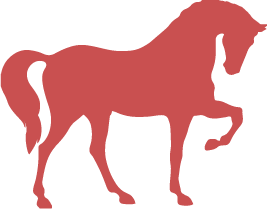ELECTROLYTES ALL YEAR ROUND
Courtesy KER Are electrolytes just for hot weather?Horses lose electrolytes whenever they sweat, regardless of season. Training, travelling, competition, wearing rugs, or…
Free Delivery when you spend $49 or more. (Weight Limits Apply – view more)
 Dog
Dog

Shop Tuckers great range of dog food, health care & wellness products today. Delivered or Click & Collect.
 Cat
Cat

Tuckers has a great range of cat food, health care & litter products for your beloved cat. Shop now.
 Horse
Horse

Tuckers carry a huge range of food, supplements, health care, hoof care and grooming accessories. Shop now.
 Chook/Bird
Chook/Bird

Tuckers range of food, accessories & health care products will keep your chooks & birds happy and healthy.
 Small Animal
Small Animal

Shop food and health care products for your little mates @ Tuckers. Delivered or Click & Collect.
 Farm/Garden
Farm/Garden

Tuckers carry a wide range of sheep & cattle products, plus everything you’ll need around the farm or garden.
 Dog
Dog

Shop Tuckers great range of dog food, health care & wellness products today. Delivered or Click & Collect.
 Cat
Cat

Tuckers has a great range of cat food, health care & litter products for your beloved cat. Shop now.
 Horse
Horse

Tuckers carry a huge range of food, supplements, health care, hoof care and grooming accessories. Shop now.
 Chook/Bird
Chook/Bird

Tuckers range of food, accessories & health care products will keep your chooks & birds happy and healthy.
 Small Animal
Small Animal

Shop food and health care products for your little mates @ Tuckers. Delivered or Click & Collect.
 Farm/Garden
Farm/Garden

Tuckers carry a wide range of sheep & cattle products, plus everything you’ll need around the farm or garden.
Article Courtesy Ranvet

Warmer weather, daylight savings – it is easy to say that the season of spring is a favourite to most horse owners! And as much as the flowers are in bloom, it certainly isn’t all roses! Springtime brings some significant changes to pasture quality and availability that can result in needing to adjust your horses current feeding ration and regime. In today’s blog we talk about some of the common spring diet considerations all horse owners should check.
Grass- it is very green and there’s a whole lot of it!
Many common horse pasture species thrive in springtime due to a combination of warmer soil temperatures and an increased photoperiod, which is favourable to both seed germination and pasture development. This results in both an increased quantity and a changed quality which will require specific management for each horse.
Managing Quantity
An increase in pasture availability will mean longer hours spent grazing, and perhaps the opportunity to reduce additional feed sources in the diet. Reducing hay and or chaff is a common action, as roughage in the form of pasture, is seen to be abundant. However, they are not a like-for-like swap.
Spring pasture is high in moisture, leaving its Dry Matter % as low as 15%. What does this mean? For every 1kg of pasture consumed, 850g was water, and only 150g was nutritional components. In Hay however, Dry Matter % is as high as 90%, which provides an opposite effect to pasture, with far less water consumed per kg. As can be seen in the below table, the ultimate effect of this change in dry matter is the total consumption required to receive daily nutritional needs.
Total amount to be digested in order
| Ingredient | Dry Matter % | Moisture % | to receive nutrients of 1kg of Dry Matter |
| Pasture | 15% | 85% | 6.6kg |
| Hay | 90% | 10% | 1.1kg |
Body Condition Scoring is the best way to effectively manage this change. Horses who may become quickly overweight can have a ration reduction, where other horses who may not be as good doers, will still require a provision of roughage and/or a feed ration.
For horses whose pasture consumption may need stricter management, for health or weight reasons, providing hay before turnout, limiting pasture hours, or using a grazing muzzle, can reduce overgrazing tendencies.
For larger properties, where supply is far exceeding demand, harvesting the pasture surplus as hay is a common practice. Hay can be stored for extended periods and provided in times where demand is greater than supply, rectifying, for example, the winter pasture deficit.
Managing Quality
In Spring, pasture will experience a number of quality changes
An increase in leaf provides a greater surface area for photosynthetic process (the action by which the plant converts the suns radiation into Oxygen and Energy). High levels of photosynthetic activity results in the plant producing and storing volumes of Non-Structural Carbohydrates (NSC’s), including glucose (a sugar) and starch. This is among the reasons why Laminitis risk is greater in Spring, as an over provision of NSC’s, especially when coupled with insulin dysregulation (resistance), can trigger its onset. To reduce exposure, grazing at risk horses during the night, and removing them from pasture shortly after sunrise, will restrict consumption as the pasture is most photosynthetically active.
Incidents of colic and diarrhea are also common in Spring and can be correlated to changes in pasture quality. Both early-stage grasses and legumes have high nitrate levels, a form of nitrogen available for plant assimilation. Nitrate poisoning is very common in cattle, and less so in horses, however diarrhea, discoloration of the gums and colic can result from excessive Nitrate intake. Poorer fiber contents in young, high moisture grasses can also cause diarrhea and in more severe cases of digestive discomfort, colic.
Is my horse getting everything they need on pasture alone?
Horses, as natural forage animals, have survived and thrived for generations on pasture alone. However, the domestic settings we place them in are far from these wild origins. For performance horses, a grazing diet alone is likely to be insufficient, even in spring! A key area we observe deficiencies in grass only diets is Vitamins and Minerals. Vitamins and Minerals are important for a number of metabolic and bodily functions; however, the soluble state of some varieties (such a B Group Vitamins) mean they are not stored by the body. Daily supplementation is the only way to ensure these needs are being met. The inclusion of a Vitamin and Mineral supplement, such as Ranvet Ration Balancer, can rectify these deficiencies.
Further to this, behavioral changes from Spring pastures can be a common occurrence. This again comes back to a deficiency in Magnesium and B Group Vitamins, which can be correlated to an increased tendency to show flighty behaviors. Ensuring vitamin and mineral levels are being appropriately supplemented is best management practice. Completing a diet evaluation is a great tool to identify these needs and if they are being met.
You can lead a horse to water…
A commonly unconsidered part of the diet is hydration! As the saying goes, you can lead a horse to water, but you can’t make it drink. However, there is a little loophole to this, and that is providing salts and electrolytes.
Supplementing salts in the feed or via a salt lick, will ensure your horse has sufficient levels of sodium and chloride. They will trigger the thirst reflex and “remind” the horse to drink. Electrolytes, which can be given in feed, water or over the tongue, are a great way to supplement horses before and after heavy work, or travel. Electrolytes, such as Ranvet Salkavite, will encourage hydration, as well as replenishing key nutrients lost in sweat.
Entire range - quick and secure delivery
Buy securely online and pickup at your local store
Call your local store and come on down to pickup
© 2025 Tuckers Pet & Produce.
